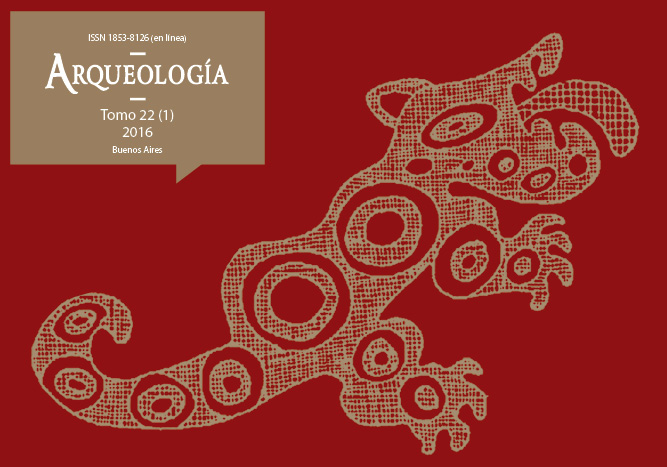Visits through time. Lithic technology in a rock art cave at Eastern Catamarca
Keywords:
Lithic technology, Instruments, Rock art, El Alto-Ancasti
Abstract
Eastern Catamarca rock art is one of the most revisited topics in the archaeology of the area. Nevertheless, these studies have tended to homogenize these spaces assigned to La Aguada culture of. In the case of Oyola 7, a series of overlappings observed in the representations and differences in the pigments preparation tells us a history of the construction of these panels in the long term, where new designs were added in each visit to the site. The excavation of this cave provides relevant information about these visits and the activities that took place there. In this sense, lithic technology shows the use of local raw materials, the manufacture of a wide variety of tools and the achievementof specific stages of the chain of production chain inside the cave. With this information we provide new evidences that contribute to the understanding of these spaces and their transformation and experimentation through time.Downloads
Download data is not yet available.
How to Cite
Moreno, E., & Egea, D. (1). Visits through time. Lithic technology in a rock art cave at Eastern Catamarca. Arqueología, 22(1), 223-232. https://doi.org/10.34096/arqueologia.t22.n1.2473
Section
Reports
Authors who publish in this journal agree to the following conditions:
- Authors retain copyright and yield to the journal right of first publication with the work registered with attribution license Creative Commons, which allows third parties to use the published always mentioning the authorship of the work and first publication in this magazine.
- Authors can make other independent and additional contractual arrangements for the non-exclusive distribution of the version of the article published in this issue (p. Eg., Inclusion in an institutional repository or publish it in a book), provided that clearly indicate that the work was published for the first time in this magazine.
- It allows and encourages the author / s to publish their work online (eg institutional or personal pages) before and during the process of revision and publication, as it can lead to productive exchanges and greater and more rapid dissemination of work published (See The Effect of Open Access).





(1)13.png)






1.jpg)
1.jpg)


13.png)
1.png)


(1)1.png)









